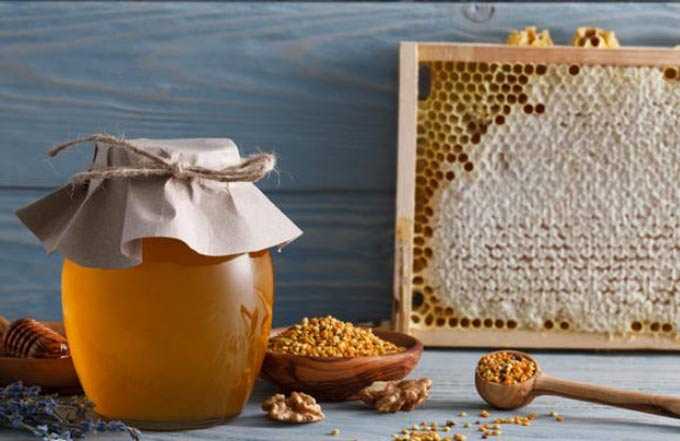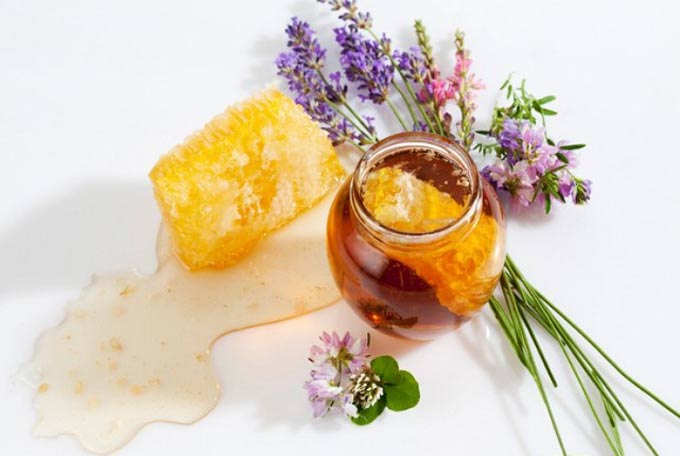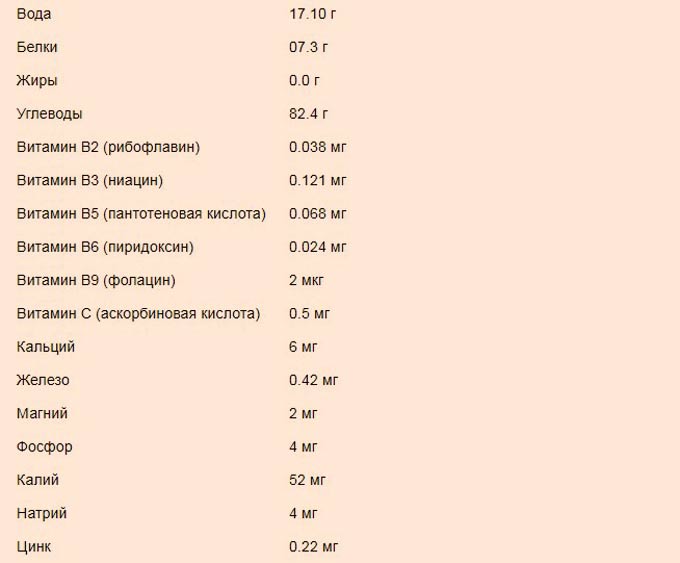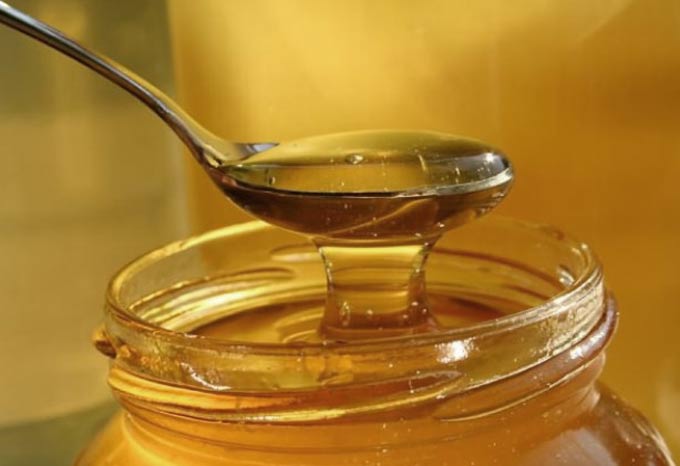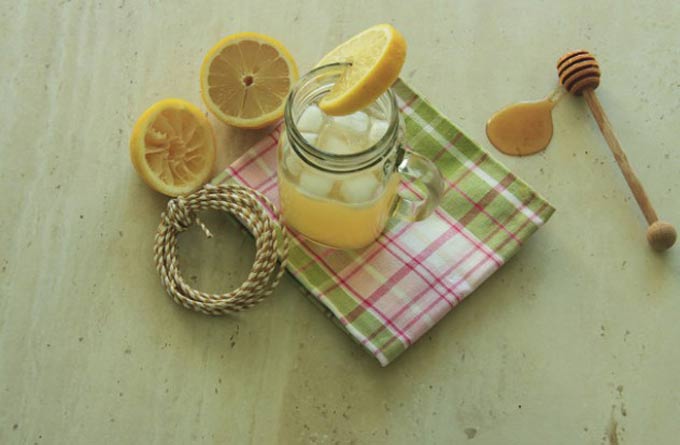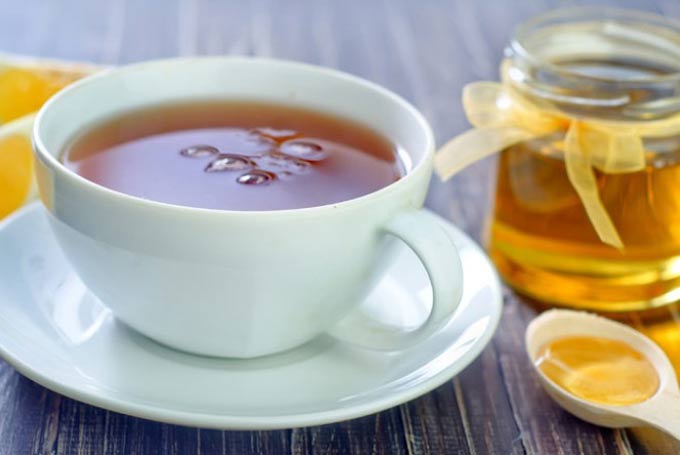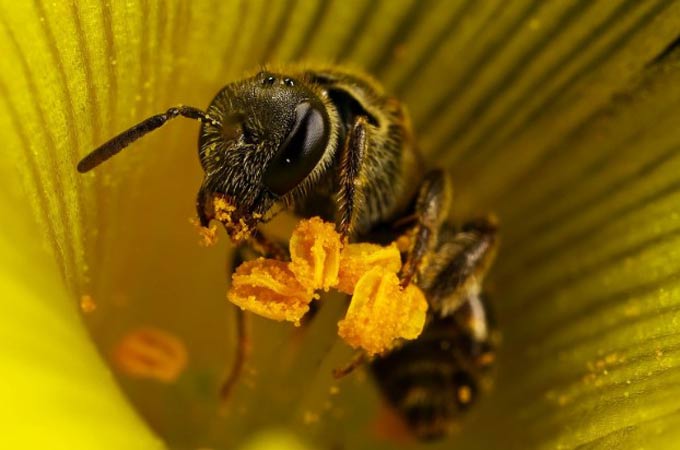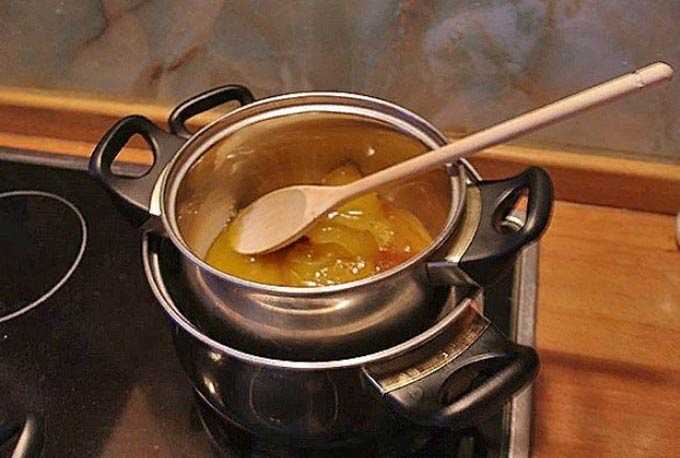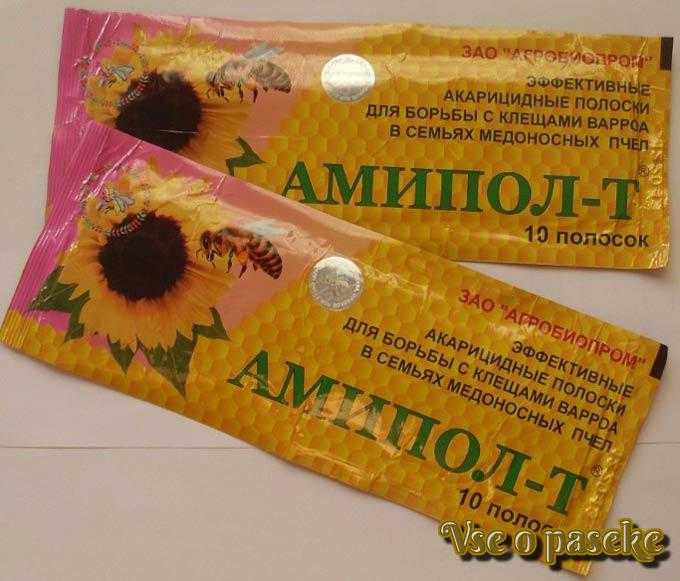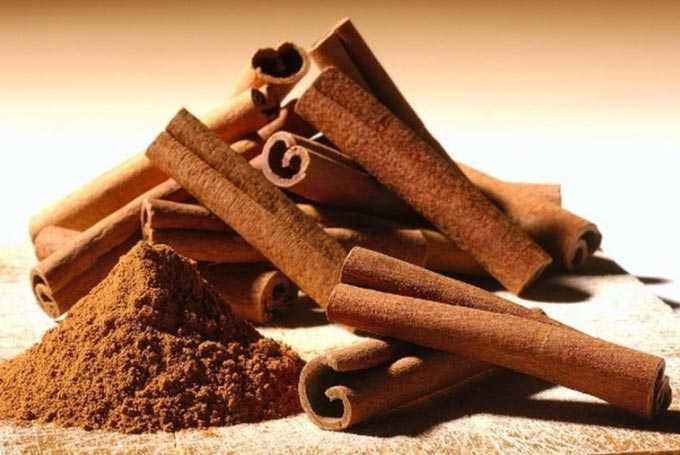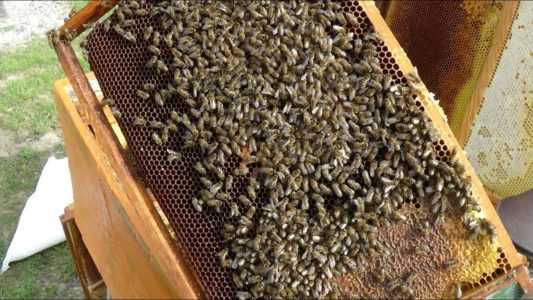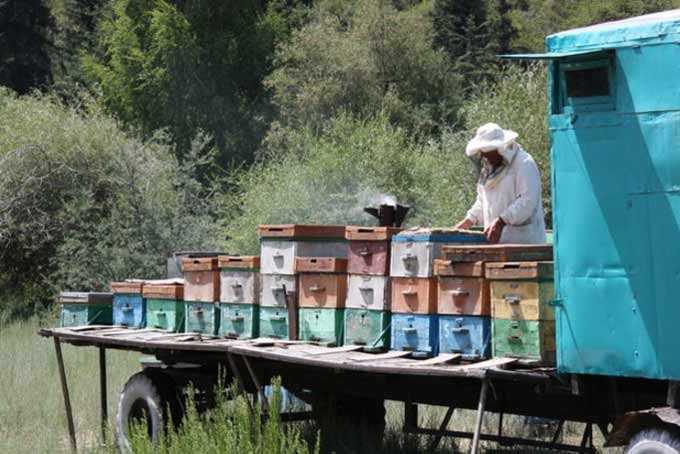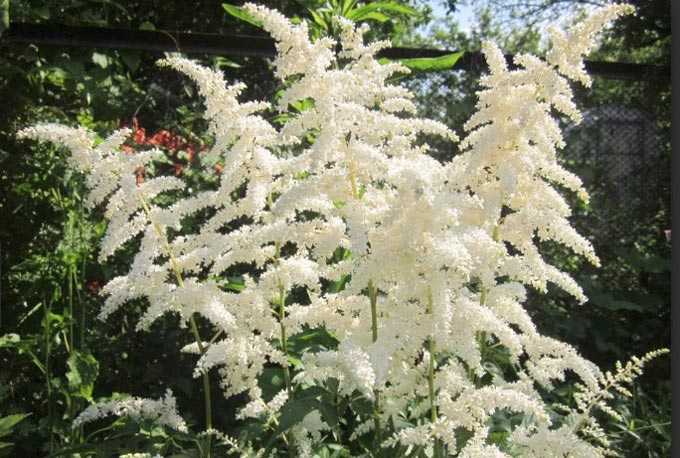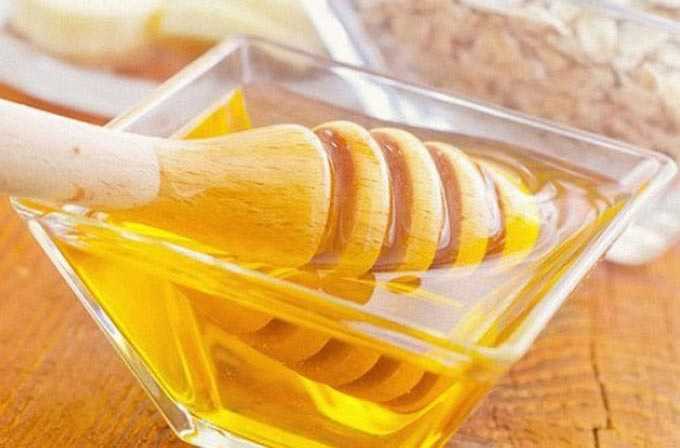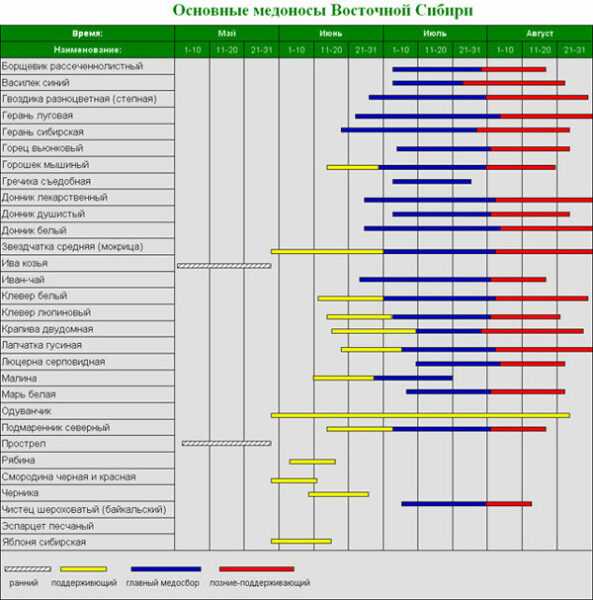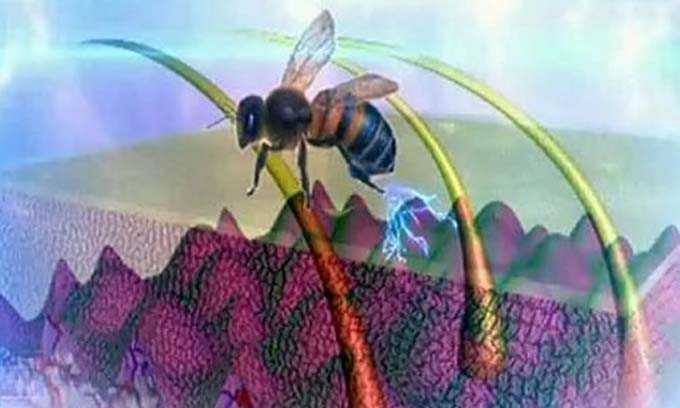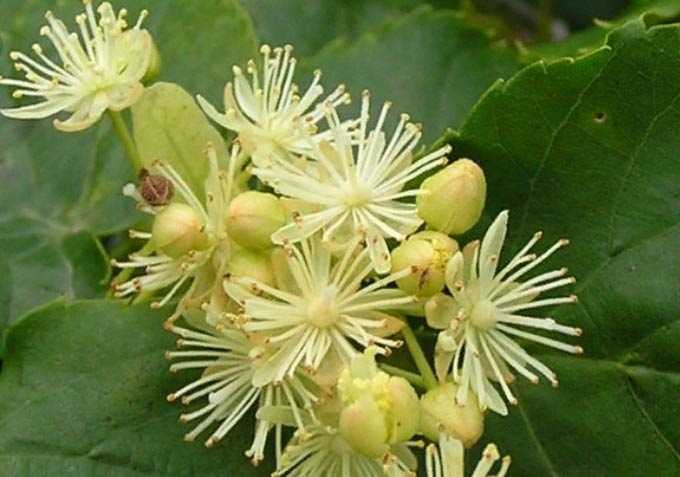The benefits and harms of bee honey are determined by its nutritional value, chemical composition, glycemic index and calorie content.
This bee product is highly digestible for the human body, but if overeating, it can pose a certain health hazard.
The content of the article
- 1 Definition and consumer characteristics
- 2 Chemical composition
- 2.1 Biological activity
- 3 Food value
- 3.1 Calorie content in 100 grams and one spoon
- 3.2 Glycemic index
- 4 Medicinal properties
- 4.1 To whom the product is recommended
- 4.2 The benefits of certain varieties
- 4.3 Which varieties are best to avoid
- 5 How to use it correctly
- 5.1 When and with what to eat
- 5.2 Why can’t you warm
- 6 When is it dangerous to use
Definition and consumer characteristics
JW White, Jr., the head of the honey research division of the Herbal Products Laboratory of the Eastern Research Branch of the US Department of Agriculture, called this bee product “a viscous liquid prepared by bees from nectar obtained from flowers of various plants and stored as feed.”
In domestic reference books, the definition is somewhat different, but in meaning it almost does not differ from the above. For example, honey is called “a mixture of sugary substances inverted (or transformed) by bees, which these insects produce mainly from flower nectar – or an aqueous solution of the so-called cane sugar.”
Of course, for consumers, the basic characteristics of a product are more important than its scientific definition.
Is he:
- completely natural;
- very tasty – it completely replaces any dessert;
- contains a whole range of beneficial nutrients;
- has medicinal properties recognized by medicine.
These are the characteristics of a mature bee product that meets all sanitary and hygienic requirements. Usually the quality of honey is confirmed by appropriate laboratory findings.
Chemical composition
The complex of chemical elements of this bee product is very diverse, which determines its valuable medicinal and nutritional properties.
The chemical composition of natural honey is presented in detail below (based on 453,59 grams):
- 17,2% – natural moisture (water);
- 79,59% – various sugars: levulose, dextrose, ordinary table sugar or sucrose, maltose, reducing disaccharides, higher sugars;
- 1% – acids (acetic, butyric, lactic, amino acids, formic, succinic, citric, malic, gluconic), proteins and ash (sodium, potassium, magnesium, chlorides, sulfates, phosphates, silicon dioxide and other substances);
- 2,21% – minor elements: vitamins (pyridoxine, biotin, folic acid, nicotinic acid, riboflavin, thiamine, vitamin K), antibacterial component (inhibin), enzymes (phosphatase, catalase, diastase, invertase), acetylcholine, tannins, alcohols (dulcite and mannitol) aromatic and flavoring impurities (esters, aldehydes, terpenes), pigments (carotene, xanthophyll, chlorophyll and its derivatives).
Product moisture indicates his maturity. Unripe honey, extracted from the honeycomb ahead of time, quickly undergoes fermentation and acidification. It is not suitable for long-term storage! And in general, its appearance, taste, smell leave much to be desired. All these parameters will change for the worse from the first days of storage, especially at room temperatures.
Sahara – the basis of the chemical composition of the bee product. Its solids are from 95 to 99% sugary components. A total of 15 sugars have been isolated. According to the size and complexity of the structure of molecules, they are divided:
- to simple ones that are part of more complex compounds, the main ones are fructose and glucose (the ratio between them is responsible for the rate of crystallization of the product);
- and complex or higher, for example, lactose, sucrose, maltose.
Some sugary compounds are formed already during storage or maturation under the influence of enzymes and acids.
acids – only 16 items – form a special honey taste, complicating the bouquet of the bee product, but at the same time masking its sweetness.
Mineral components, despite their small percentage, increase the intake of salts in the human body with regular use of honey. Phosphorus and calcium rank first, followed by sulfur, chlorine, magnesium, sodium and potassium.
enzymes participate in the formation of the chemical composition. They are produced by bees when processing nectar. Thanks to invertase (called sucrose), flower nectar is broken down or inverted into fructose and glucose.
А by the level of diastase in a bee product, its quality is determined… The minimum value is not less than 7 Gothe units (according to the national state standard). Heating is known to destroy this enzyme. Also, its level naturally decreases during long-term storage in pantries, where from +24 to +27. Optimum temperature indicators for storage are + 8 … + 10 degrees Celsius.
Как source of vitamins honey is not a record holder – its regular use does not cover the daily requirement of the human body. The main source of vitamins in the product is pollen, which is a natural impurity. With careful filtration, the percentage of vitamins in honey also decreases.
Dextrins are important, first of all, for laboratory analyzes. According to them, with the help of alcohol, the impurity of sugar syrup is determined. Also, dextrins are always more in honeydew honey.
The chemical composition of honey in the tables:

Biological activity
Biological activity (the ability to evoke a response in the cells of a living organism) is due to the presence of:
- mineral substances;
- a slight admixture of vitamins in the form of pollen;
- antibacterial component in the form of inhibin (comparable in action to hydrogen peroxide).
Laboratory experiments on guinea pigs have established that the bee product:
- strengthens hair roots (fur) and activates their growth;
- makes joints strong;
- increases the secretion of the female sex hormone – estrogen;
- improves appetite;
- destroys pathogenic bacteria;
- increases the activity of cholecystin.
Food value
The nutritional value of natural honey is due to its high digestibility – all components are 100% split in the human body. For comparison, bread will be assimilated by 96, milk by 91, meat by 95, and nuts by 80-85 percent.
According to its characteristics, it is not only an energy carbohydrate product, but also a therapeutic and prophylactic agent containing biogenic stimulants.
The main “consumers” of honey are skeletal muscles and the nervous system. They are the ones that absorb glucose. Fructose has a beneficial effect on the heart muscle, ensuring its performance and quick recovery. Minerals and organic acids stimulate the body’s defenses, participate in metabolic processes – hence the general strengthening and rejuvenating effect of the bee product.
The composition of natural honey, providing its energy and nutritional value, is shown in the table below (based on 100 grams of product):
Calorie content in 100 grams and one spoon
When using a bee product as a dietary supplement, it is important to count calories, since the body will receive more of them than when using many of the usual products of the daily diet, such as bread (250), milk (60), sour cream (206), beef (218 kcal).
The calorie content of natural honey largely depends on its type. Average values are from 300 to 350 kilocalories per hundred grams.
Usually light-colored and stored for a long time in a liquid state, due to their high fructose content, varieties are lower in calories:
- The “lightest” acacia and flower varieties, obtained during the flowering of fruit trees, are about 300 kilocalories.
- Buckwheat, despite its dark color (the influence of pigments and a high content of trace elements), provides the body with an average of 305 kilocalories.
- Popular lipets and sunflower honey provide an average of 320 to 330 kcal. The same amount in any comb honey.
- The most “dangerous for the figure” variety is obtained from rapeseed – it contains from 329 to 335 kcal.
But since this bee product is traditionally not consumed in large quantities, you can focus on the amount that fits in one spoon. And it doesn’t matter what consistency the honey is – liquid or candied. The main thing is not to pick it up above the edge (there is “no slide”).
So:
- tea room – 26 (in the same amount of sugar there are 16 kilocalories, but there is less benefit from it for the body);
- dessert – 34;
- dining room – 56 kilocalories.
These are average figures! Depending on the variety, there may be fluctuations in the direction of increasing calorie content.
Glycemic index
Diabetics avoid the use of honey for fear of its negative effects on the sick body. Are there any exceptions to this rule?
Yes, type 8 diabetes as long as blood sugar is controlled. We remind you that this type of disease is accompanied by an increase in blood sugar up to XNUMX units. With it, you can use any kind of honey for therapeutic and dietary purposes. One or two flat teaspoons will not harm even the elderly.
Does natural honey increase blood sugar? Sure! Any product has the same effect. This is how the human body works – after eating, hyperglycemia sets in. Then the pancreas is included in the work.
By releasing insulin in the right amount, it contributes to the distribution of the obtained sugar in various tissues of the body for a short-term supply, used for immediate needs, or long-term storage (in the form of fatty deposits so hated by nutritionists). The same hormone prevents long-term stores from being wasted by converting them into glucose, the first-class fuel. Blood sugar drops – hunger occurs, followed by a new meal.
To determine the level of hyperglycemia that occurs after a meal, a special index is used. The standard in this case is glucose, the GI of which is 100 units.
Carbohydrates are especially active in this regard. Within half an hour after consuming them on an empty stomach, the maximum glucose content in the bloodstream is observed. The same thing happens with honey – the concentration of sugar increases.
But there is one important point to keep in mind. The glycemic index of natural honey is quite low! There are varieties containing a high percentage of fructose that can be safely recommended for diabetics suffering from type II disease. The GI of fructose is only 19 units. And the GI of honey in general ranges from 50 to 70 units, depending on the variety.
Varieties that are less dangerous for diabetics (average GI from 49 to 55) contain a minimum of glucose – up to 24 percent of the total mass:
- acacia;
- chestnut;
- lime.
For comparison, the GI of potatoes and rice is 70, bread – 50, buns – 95.
Read more: Diabetes mellitus and honey consumption
Medicinal properties
Consuming honey can fill in the many gaps in our diet. It is also an opportunity to prevent many common diseases.
But the healing effect will be noticeable only with regular use of the bee product in moderation!
Bee honey benefits:
- a destructive effect on the pathogenic microflora, for example, the pathogens of paratyphoid fever, dysentery are destroyed, E. coli dies;
- the content of iron increases, and, accordingly, hemoglobin in the blood;
- metabolic processes and all the work of the endocrine glands are normalized;
- resistance to infections and adverse environmental influences increases – immunity is strengthened;
- toxins, heavy metals are removed better, urination improves;
- there is a beneficial effect on the circulatory system – the heart muscle is strengthened, the coronary vessels expand, the level of harmful cholesterol decreases, the pressure normalizes;
- inflammatory processes in the gastrointestinal tract are removed, the functions of the liver and stomach are normalized, appetite increases;
- the nervous system normalizes – sleep improves, there is a calming effect;
- with colds, bacteria and viruses are destroyed, attacks of severe coughing are relieved – sputum from the bronchi and lungs is better removed, inflammation of the tonsils passes.
To whom the product is recommended
Honey is necessarily present in the diet of astronauts, divers, athletes due to its energy value. In extreme conditions, the received and stored energy is converted into muscle strength.
After heavy physical and mental stress, this bee product will be useful to any person who does not suffer from allergies.
For old people and young children, urinary incontinence is treated with honey. The product, being hygroscopic, retains moisture in the body and prevents nighttime urine flow.
It is also recommended to use it in case of a lack of vitamins, weakening of the body’s defenses, nervous disorders, a sick heart, blood vessels, and dysfunction of digestion. And this is just a small list of diseases and pathological conditions of the body!
The benefits of certain varieties
Polyfloral or multicomponent varieties have a versatile effect on the body, and monofloral specific:
- For example, buckwheat honey is used to treat low hemoglobin levels in the blood (anemia) and use it after blood loss that occurs during surgery or childbirth.
- Lipets and raspberry varieties are indispensable in the treatment of colds and infectious ailments. Both varieties have a diaphoretic effect. And raspberry honey also relieves general fatigue and nervous tension.
- The sainfoin variety is recommended for decreased vision and eye diseases due to the high content of carotene.
- Cardiovascular ailments and malfunctions of the endocrine glands are treated with honey saturated with pollen. These varieties include rape, sweet clover, sunflower.
- And the thyroid gland is cured with a bee product obtained from flowering chestnuts. It contains a lot of iodine.
- Sage and thyme varieties have analgesic and anti-inflammatory effects on the body. In folk medicine, they are used for inflammation of the nasopharynx and throat – the destruction of pathogenic microorganisms occurs.
Which varieties are best to avoid
Certain types of honey are less useful for humans. Basically, these are varieties that are considered low-grade and not suitable for wintering bees. They differ in poor chemical composition – they do not contain many vital elements.
These are the varieties of nectar obtained:
- from shrubs from the willow genus (delirium, long-eared willow, and others);
- from marsh plants;
- from many representatives of cruciferous plants (for example, field cabbage, waida, sverbich, rape, camelina).
Sometimes rapeseed honey is also considered to be such varieties. However, it is highly regarded in Europe as a product that detoxifies the body from toxins and radiation. Therefore, this attitude is unreasonable.
Read: Rape as a honey plant
How to use it correctly
The decision on the amount and methods of using natural honey is decided on an individual basis. Preferably, after consulting a doctor.
As for general recommendations, they will be given below.
Children’s age is not a contraindication, but parents need to consider two important facts:
- If you overeat this product – give it to your child a lot – then persistent disgust may occur.
- Age under one year is not a direct contraindication, but a reason to be careful. In order not to risk it once again, it is better not to give honey at this age.
Over the age of one year it is enough to eat one or two teaspoons a day. Moreover up to six years old it is better to stir honey in warm (not hot drink!) – tea, milk. Or add the daily rate to cereals, sour fruit purees.
Adults can dilute it with just warm boiled water. And a single dosage is one or two tablespoons for them.
The maximum volumes of bee products per day have been established, which are undesirable to exceed. For adults it is 100-150, and for children under the age of fourteen – 30-50 grams.
When and with what to eat
For better assimilation, it is necessary to withstand 1,5-2 hours before the main meal or after it.… The fact is that the breakdown of honey in the body occurs in literally half an hour. And many products are simply not compatible with it.
This rule primarily applies to nuts, dried fruits, berries, sprouted wheat, bran, which are often used for medicinal or dietary purposes.
But honey is compatible with vegetable, fruit juices, medicinal herbal decoctions, and other beekeeping products: propolis, royal jelly, pollen (pollen).
Why can’t you warm
When heated above 50-60 degrees, enzymes are destroyed and oxymethylfurfuror is formed (it also appears when a sugar bee product is broken down during its long-term storage in a warm room).
Therefore, grandmother’s advice to drink hot tea or milk with honey for a cold is meaningless! Such use turns the most valuable dietary product into practically poison and useless food additive.
If you want to “warm up the throat” well, it is necessary to dissolve a single dose (a tablespoon or a teaspoon) in the mouth like a lollipop – antibacterial treatment of the mucous membrane will occur. And after 15-20 minutes drink hot tea, preferably herbal.
When honey is introduced into various medicinal mixtures for oral administration or external ointments, homemade cosmetic creams, masks, it is liquefied in a water bath. In this case, the temperature should not exceed 37-40 degrees. After all, the main goal is to preserve the unique chemical composition and biological activity of the bee product.
When is it dangerous to use
Approximately three to five people in a thousand have any form of honey intolerance. An allergic reaction has varying degrees of severity. It can be itchy skin, rashes are a milder form of intolerance. Or headache, urticaria, vomiting, diarrhea – a complicated allergic reaction. Often, immediately after taking, a characteristic burning sensation of the lips appears.
It should be noted that there are two types of intolerance to a bee product:
- congenital complete intolerance or hypersensitivity;
- or acquired sensitivity (arises after the use of a poor-quality product – with an admixture of antibiotics, agricultural preparations used to treat fields from diseases and pests, as well as poisonous – toxic or “drunk”).
Acquired sensitivity can be overcome by taking micro doses of honey. In the same way, people achieved insensitivity to various poisons. But, of course, in this case, there are certain risks – it is not known how the body will react to such experiments.
Contraindications of natural honey are as follows:
- history of allergies and intolerances;
- skin diseases – diathesis, dermatoses (the condition worsens, since carbohydrates are retained in the skin);
- postoperative period within 3-4 months after resection of the gallbladder, removal of gallstones, elimination of gastric and duodenal ulcers;
- chronic pathologies of the digestive system: pancreatitis, cholecystitis, enterocolitis;
- in old age, as well as with acute articular rheumatism, atherosclerosis (you can take for dinner only a teaspoon of honey diluted in a glass of warm tea or water!);
- in the form of inhalation, the product is prohibited for tuberculosis, bronchial asthma, heart failure with organic damage to muscles and heart valves, pulmonary sclerosis, emphysema;
- with diabetes mellitus (used with caution and only with the second type of the disease);
- with severe obesity (due to high calorie content, overeating occurs);
- any acute inflammatory processes affecting the digestive system – exacerbation of peptic ulcer, cholelithiasis, kidney stones, gastritis, pancreatitis.
The properties of natural honey make it a healing and very useful product on our table. However, the occurrence of unusual conditions and sensations after each dose should be alarming, even when there are no direct contraindications! Perhaps such a reaction of the body indicates the acquisition of sensitivity to the bee product, which is fraught with its complete intolerance up to anaphylactic shock. Take care of yourself and do not forget to consult with your doctor.
